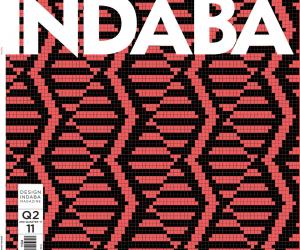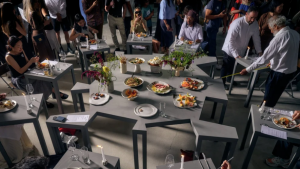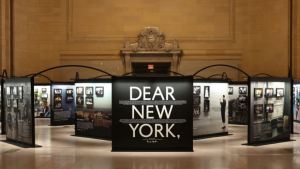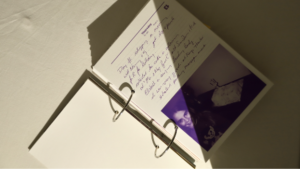First Published in
In the 1950s the term hipster was used to label arty, jazz-loving beatniks. The term has been back for a while now, referring to what used to be called the “indie kids”. Inherent in being a hipster, there is generally a level of art-school-type snobbery and pretention, coupled with a wardrobe entailing vintage clothing, skinny jeans, thick-rimmed glasses, fixie bikes and ironic moustaches. In fact, hipsters generally love irony, so maybe they’d love how ironic it is that these days, hating hipsters is pretty hip.
According to Cracked.com: “Hipsters couldn’t inspire more blind hatred if they were ginger-haired Al-Qaeda members.” Even hipsters hate hipsters. And, as is the case in many subcultures, no self-respecting hipster would admit to being a hipster, as this would imply a level of premeditation that no-one who spends a lot of effort trying to act like they are effortlessly cool would own up to.
While writers are never quite as hip as they want to be, photographers seem so effortlessly cool, and are always so well-placed in the corner of the hippest places, that they may just be the ultimate hipsters. If they are true hipsters, though, they will resist this classification at all costs. Our case studies are three of SA’s most celebrated young shutterbugs – Sean Metelerkamp, Musa Nxumalo and Chris Saunders.
Sean Metelerkamp
Sean Metelerkamp is best known for his work photographing Die Antwoord and directing their Zef Side video, despite having photographed countless subjects including Fokofpolisiekar, aKing and Playdoe, and having directed an impressive array of short films, music videos and adverts. The relationship between Die Antwoord and Metelerkamp is over (and ended badly), but the association remains enough to somewhat overshadow his other work.
Metelerkamp’s interview answers are calculatedly enigmatic and willfully strange. Asked what a typical day in his life looks like, he says “Awake when I do. Laugh. Look at myself in the mirror and imagine my face melting onto my chest. Eat whatever. Brush my face and wash my teeth. Delete all emails before I read them. Contemplate my movements. Choose a different dog and chase it to the crossroads. Exercise complete. 1pm. Eat whatever. Think about nothing. Love the nothingness. Wonder why Kurt Cobain did that. It’s 4pm…” And so on in a similar fashion until bedtime.
I ask him if the issue with Die Antwoord has been resolved, and whether he wants to talk about it. His answer is “No, and no”. He does, however, have more to say about whether he thinks the association will ultimately be good or bad for his career. “It’s a burse – a blessing and a curse combined,” he says. Despite the way things turned out, he is willing to see the positive. “Being the photographer/director who captured the image of Die Antwoord through photographing them and directing the Zef Side short film, which was the key in the blow up, is a great feeling,” he shrugs.
But he doesn’t agree with me that it may overshadow his other work. He has moved on artistically. “It might be the most looked at or talked about, but I’m already looking and talking about other things, as I thrive on progress and constant evolution within my creative output”, he insists. He will be doing a residency in New York from April, is working on a collection of photos and written interviews with recovering addicts from rehab centre Noupoort (DEC), is exhibiting at the Museum Gallery in Woodstock until the end of May, is launching a clothing brand called Fuhrer, and is working on “Sean Metelerkamp – the hardest project of them all”. Understandably, there probably isn’t much room in his life to ponder Die Antwoord and their effect on his career.
So now that you’ve met Metelerkamp, the million-dollar question is, what is his take on why photographers are so hip? “I’m not a photographer. I’m not a hipster. I’m the biggest loser,” he bemoans.
Hipster rating: 9/10. Like any true hipster, Metelerkamp wants to be seen as a loser who doesn’t care about being cool, when actually he is way too successful and conscious of trends to pull it off. Metelerkamp’s hipsterdom runs deep.
Musa Nxumalo
Musa Nxumalo is a self-described “alternative kid” from Soweto. He was given the opportunity to explore photography through the Market Photo Workshop, and works there to this day – having gone from a kid learning the ropes to a man with his own office. His work, somewhere between art and journalistic photography, has so far looked at other alternative kids he knows from the township in an attempt to alter the stereotypical view of culture there. His next series though, will explore issues surrounding family.
Nxumalo definitely has no problems with the rockstar-photographer comparison; he’s pretty much a rock star who happens to be better at the visuals than the music. He used to be the unofficial manager and non-playing member of Soweto hard-rockers Organised Distortion. “I am a rock’n’roll lover. I have always been, before I even took up photography,” he implores.
But he is unimpressed by the suggestion that people would pursue a career in photography to be hip. He quotes documentary photographer David Hurn: “Many people are interested in photography in some nebulous way; they might be interested in the seemingly glamorous lives of (top fashion or war photographers) or in the arcane ritual of the darkroom processes; or in the persona that they could adopt if only they took pictures.”
Says Nxumalo, “I think that’s what you are referring to when you speak about photographers being hipsters. I have grown to lose interest in such photographers. But if you had asked me this question two years ago I would have given a completely different answer.”
Nxumalo, a black rocker from the townships, who admits to sometimes feeling like an outsider, is far more interested in alternative culture as something to identify with. He is interested in it as it gives him a sense of community rather than because it makes him hip. “I’m too much of a coward to be gangster and I am not from a middle class or well-off family to be snobby. So I am interested in cultural exploration merely for means of self-liberation from social and other personal issues, and most importantly for creating an identity for myself,” he maintains.
And, like most cool kids eventually do, Nxumalo is growing up and moving away from photographing “Alternative Kidz” (the title of his first collection). “I want to photograph my home”, he says. “l have been fond of the notions of family, my family structure, conditions and history. So right now I am spending a lot of time at home with my sister, mother, niece and grandfather.”
Hipster rating: 7/10. Like Metelerkamp, Nxumalo’s disdain for hipsters is a giveaway that this is indeed exactly what he is, not to mention spelling “kidz” with a “z”. However, he refers to himself as an alternative kid, which is a bit too 1990s, and he seems to give answers that are devoid of irony.
Chris Saunders
A couple years ago I just wanted to go on a brief tour of Eastern Europe. But Chris Saunders convinced me to extend it into a rock’n’roll pilgrimage across Spain, Germany, Holland and Belgium in search of festivals and bands. Unlike most phomainly through their images, he is also one of the most talkative, hyperactive people I have ever met.
Since our experience a couple years ago, Saunders completed a residency at Fabrica, has been to Kenya as part of an assignment on sustainable development as a result of winning the ACP Photo of the Year Competition and is working on a documentary about the Shangaan electro scene. He is looking at galleries both locally and globally to exhibit his collaborations with artist Murray Turpin, and his work with fellow photographer Justin McGee is showing at the Gregor Jenkins Studio in Cape Town.
He is certainly busy, but is quick to dispel the “rock’n’roll lifestyle” myth. “With regard to my lifestyle, at this point in time I think it is the opposite. After my year at Fabrica I came back to South Africa completely broke, having spent all my cash travelling and trying to live in Italy. I’ve had to move back home and rent my apartment out in the hope of saving and getting back on my feet.”
As for explaining why photographers are so hip, Saunders says: “I think it’s the art of selling yourself firstly. You are always having to get your work out there and often part of the job is being presentable and good with people, this requires a certain amount of presence I guess. The other element would be the travelling and coming back with strange new clothes, music and behaviour that people think is quite ‘hipster’ in SA but is often normal wherever you’ve come from.”
Hipster rating: 8/10. His admittance that he purposefully goes out to buy the coolest clothes overseas and his ability to entertain the idea that he may indeed be a hipster lose Saunders a point. However his attempts to convince us how un-rock’n’roll his lifestyle is and, moreover, the fact that he is shooting a documentary on the Shangaan electro scene are a dead giveaway.
Conclusion
Photographers are complete hipsters. Writers, on the other hand, are totally not. We are complete losers. Now I’m off to drink red wine at Wolves.




































